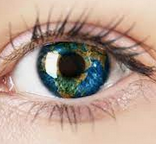In the aftermath of the furious firestorm that left the historic town of Lahaina in smouldering ruins, frustrations have grown over the slow response to the disaster and the lack of preparation for well known risks that have lingered on the island for years. While the investigation into the cause of the fire, which ignited in the grasses before being whipped toward the shore by strong winds, is still ongoing, it’s clear now that capacity to manage the catastrophe in this sparsely populated state has been significantly strained.
“It is not like anything they have dealt with before,”
said Brian Ferguson, a deputy director for the California governor’s office of emergency services, an agency experienced at managing the complicated layers of recovery that follow catastrophic wildfires.
“The emergency management agency in the whole state of Hawaii is equivalent to the emergency management in a medium-sized city here.”
California has deployed teams with expertise in mass-fatality events and debris management to aid in recovery efforts in Hawaii, joining federal agencies that are now on the ground. Under the direction of the federal emergency management agency (Fema), plans are beginning to be put in place to clear the rubble so communities can begin to heal – but the complicated and costly process will be slow going.
“It will be a long time before people will be able to rebuild in Lahaina,”
Ferguson added. The process, even after fires on the mainland and in areas where systems are already in place, typically takes years.
Guardian reporter Dani Anguiano, who has been reporting from the disaster in Maui, said the lagging local response in the immediate aftermath of the fire only added to the hardship inflicted on residents.
“The response here and how little central command there seems to be shocks me,”
she said.
Survivors shared harrowing experiences, some turning to the ocean for refuge from the fire because they were given no warning or time to escape. A mother and daughter told her they spent 12 hours wading in the surf while they waited for rescue as flames surged through homes and businesses along the shore.
Dani, who also reported on the devastating 2018 Camp Fire that swept through the town of Paradise, California, found comparisons between the two tragedies, both of which were defined by fast-moving flames that caught communities by surprise. She and Guardian editor Alastair Gee wrote a book about the disaster that killed 85 people, noting then that the unprecedented calamity could soon happen again. Now, Lahaina has been etched into the history books, surpassing the heartbreaking toll to become the most deadly blaze in the US in the last century.
“The message in the book was that we will see more catastrophic deadly fires,”
Dani said.
“And I am still surprised by how devastating this fire is.”
As the climate crisis continues to fuel an increase in fire risks around the world, the fires in Maui serve as yet another reminder that dangers are rising in areas less accustomed to battling big blazes. Wildfires are still raging across Canada, with more than 130,000 square kilometers already scorched and threats expected to stretch into fall, flames have licked swaths of Europe, and ashen air has shrouded cities across the globe. Experts have warned that all must be better prepared for a future with fire.
In Maui, while officials across all levels of government have scrambled to set up response systems, locals have filled the gaps.
“People are jumping into action to help their neighbors,”
Dani said, adding that every business left standing has converted to disaster response.
“It is really moving,”
she said.
“In spite of how frustrated people are, they are really heartened by how this community has come together for one another.”
Read more on the Hawaii fires:








2 thoughts on “What now for Maui?”